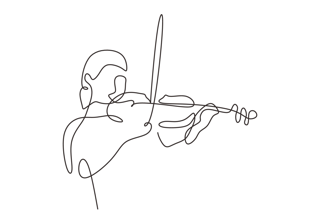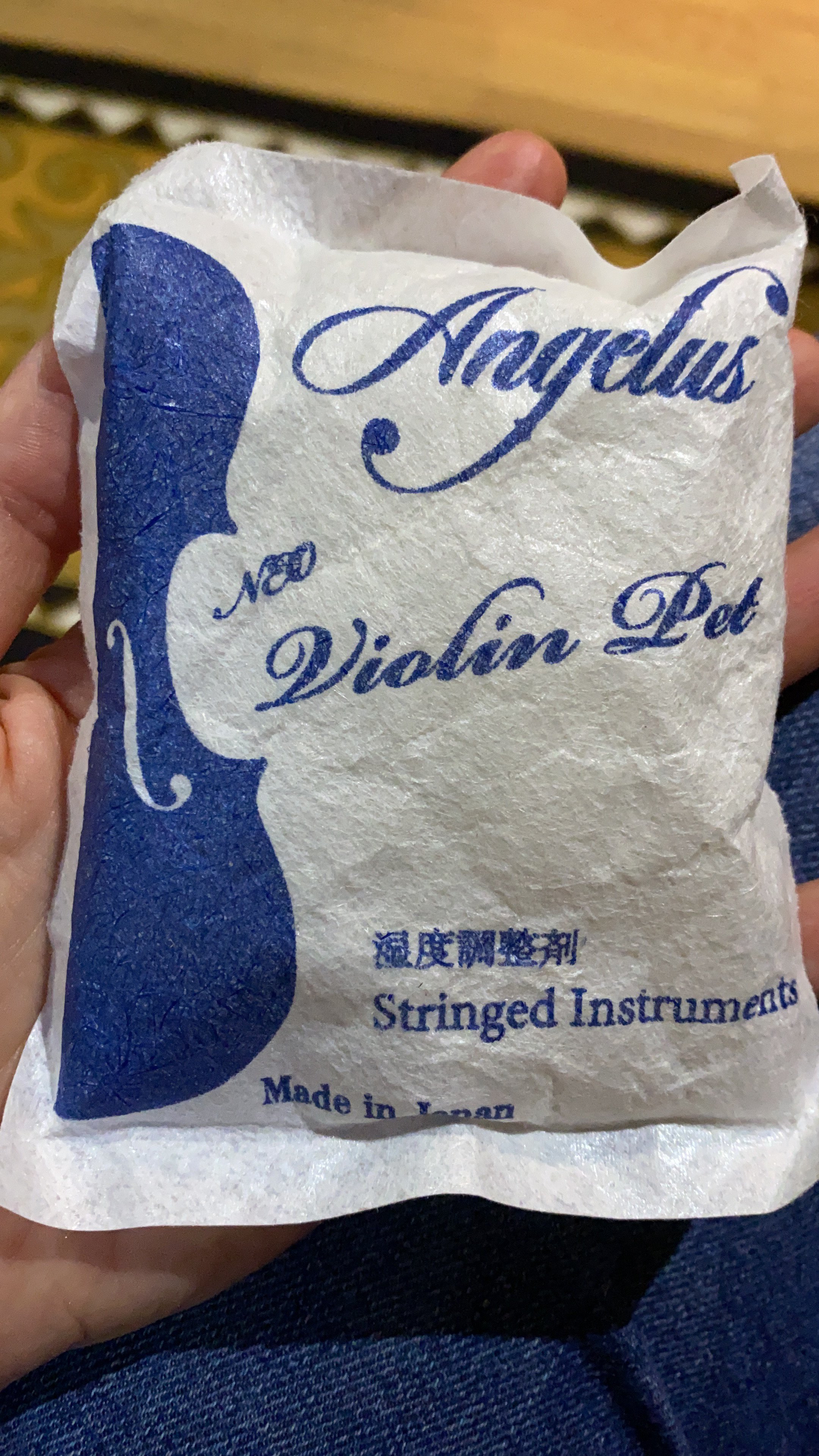Getting Started on the Violin
In Japan or elsewhere on the globe!
Congratulations on taking your first steps on your violin journey!
Whether you live in Japan, the United States or elsewhere on the planet, I hope to bring you some useful information on what you need in order to get started.
The Violin
Most important, you will need a violin that fits your body size. Violins come in a range from 1/16, 1/10, 1/8, 1/4, 1/2 , 3/4 , and full size. Rentals are common in the United States however, they are not as common in Japan. It is in your best interest to invest in a quality violin as the sound you produce will continue to inspire your practice. I recommend that you take time and go to a violin shop to get you or your student sized properly. Most violin outfits in Japan range from around ¥40,000 - ¥80,000 for fractional size instruments. When your student outgrows the instrument, you can sometimes trade in for a bigger size or resell it to the shop at a lower price. Most fractional size violins come as an "outfit" with a case and a bow. If you are looking for a full-size violin, these will probably come separately. Expect to pay at least ¥100,000 for a decent full size instrument. Many shops allow you to take a couple violins and bows home for a trial before you choose.
If finances are an issue, please inform your local violin shop. Sometimes they can offer need-based scholarships or help you find funding alternatives. Please reach out to a music professional if you are experiencing this before purchasing a low quality “cheaper” instrument from Amazon.
The Accessories
Not all accessories are necessary so I will take you through a few that you will need in order of importance:
Shoulder Rest – In my opinion, a shoulder rest is hugely important to learning proper posture. Many professionals play without a shoulder rest but having one to start really helps students with good posture habits before making an artistic decision of playing without. There are many brands of shoulder rests and sponges for sale. Kun is a great standard brand to start from. It usually grows a couple sizes and folds up nicely in the case.
Beginning – Intermediate
Kun Mini Shoulder Rest ¥3080
Kun Original Shoulder Rest 4/4
Intermediate – Advanced
Viva La Musica ビバムジカ ¥12,100
Pirastro Korfker Rest ¥44,000
Rosin – Rosin affects the sound and tone quality of the violin. In my experience, you only need to rosin your bow for every 3 hours of practice – whether that is 3 hours per day/rosin once a day, or 3 hours a week/rosin once a week. Often a violin outfit will come with a cake of rosin. Darker rosins tend to be stickier making it a more ideal choice for beginning students who need a little extra bite in their sound. As the student gets more advanced, they can begin to hear the subtleties of sound each rosin allows them to create. Rosin usually lasts a very long time, so it’s a worthwhile investment.
Beginning
Most violin outfits come with a cake of rosin. This should suffice until the student is a little more experienced and dedicated to practicing for longer periods.
Intermediate – Advanced
Colophane Milant-Deroux ¥2000
Pirastro Olive ¥2592
Cecilia Solo Violin Rosin ¥3500
Bespoke Leatherwood Supple Rosin ¥10,890
Cleaning cloth – I like to use a dry microfiber cleaning cloth to wipe down the rosin from the strings as well as the body of the violin and stick of the bow after each practice session. This keeps your instrument looking nice and also affects the tone. Any handkerchief can work but most instrument shops sell cloth specific for wiping down your instrument.
Microfiber cleaning cloth ¥880
Strings – It is recommended that students change their strings once a year. Over time, the weather makes them stretch and shrink affecting the quality of sound they produce. Some soloists change their strings as often as weekly! The minimum is once a year, even if they aren’t broken.
Beginning
Intermediate – Advanced
Practice mute – I recommend a rubber practice mute. Mutes are important as you may find yourself needing to practice at times that aren't suitable for your neighbors, family, or housemates. Mutes are also helpful when warming up in a group setting such as recitals or auditions
Gewa Rubber Practice Mute ¥1760
Music stand – I recommend a sturdy Manhasset stand. If this is not possible, a wire folding stand is a better option than propping your music against a dresser or piano. Playing with good posture is paramount to producing a good sound and keeping our bodies free from repetitive stress injuries like tendonitis and back pain. A good stand promotes good posture which leads to more productive, and safe practice.
Total Energy Tuner app – This amazing tool will help you streamline your practice time. This app is a tuner, metronome, slow-downer recording device and practice timer all in one! Skip the physical tuners and cute metronomes and buy this app instead.
Total Energy (TE) Tuner App ¥600
Violin Pet – This is a small humidifying bag that you can keep in our violin case. In the winter when it’s very dry, moisten it with water but make sure it doesn’t touch your violin. In the humid summer, leave it as is and it will absorb some of the humidity in your case. This helps prevent your instrument from becoming warped and more in tune the next time you take it out.
You can access my Amazon Japan shopping list for students which has many of these products linked.
Do you have any questions about getting started in Japan or somewhere else? Please reach out to me or comment below if you have any questions or concerns!
*I do not receive commission from the companies of these items listed. I genuinely believe these products will enhance your musical journey.

